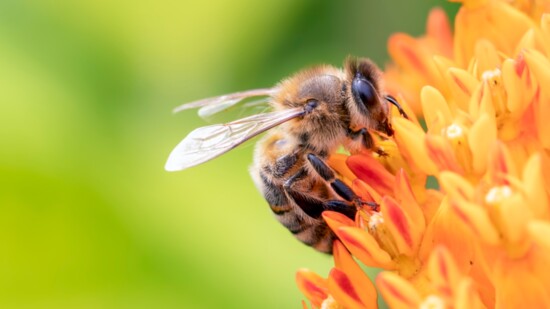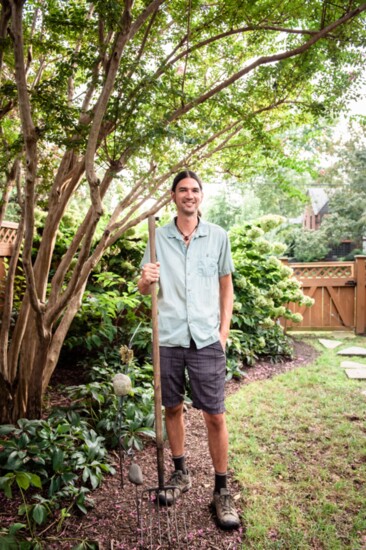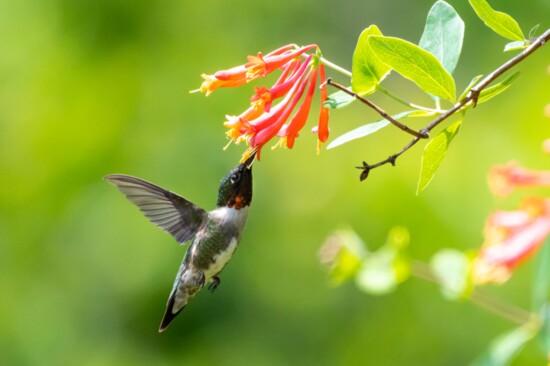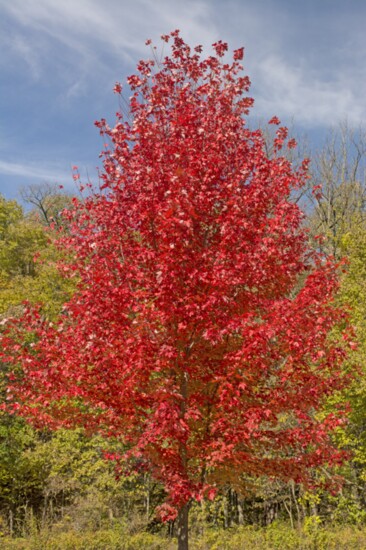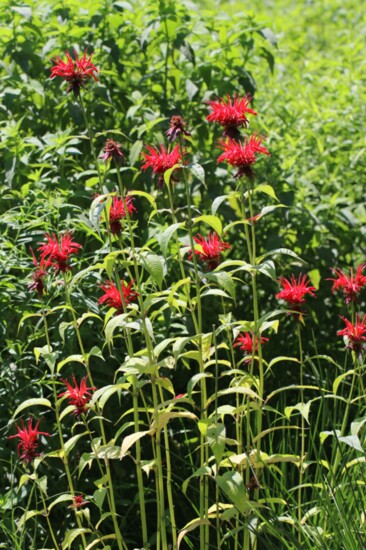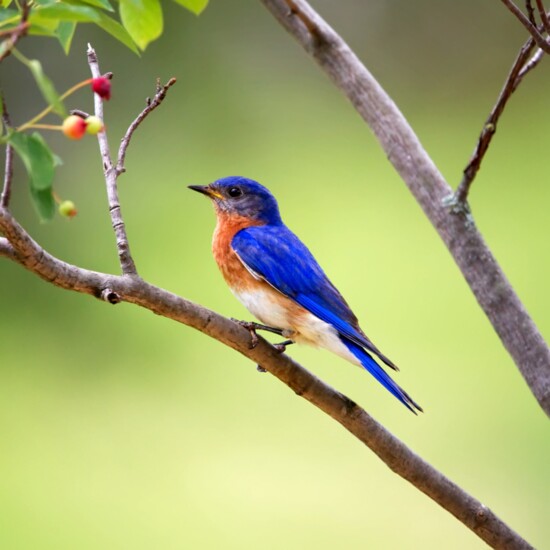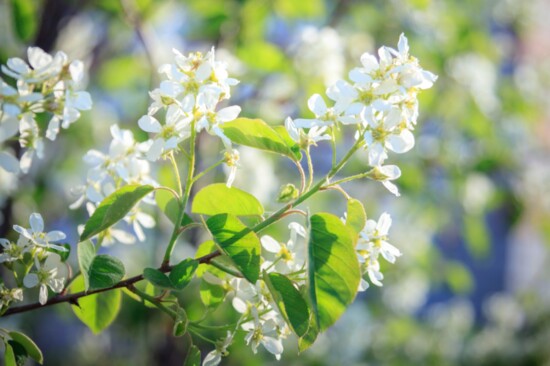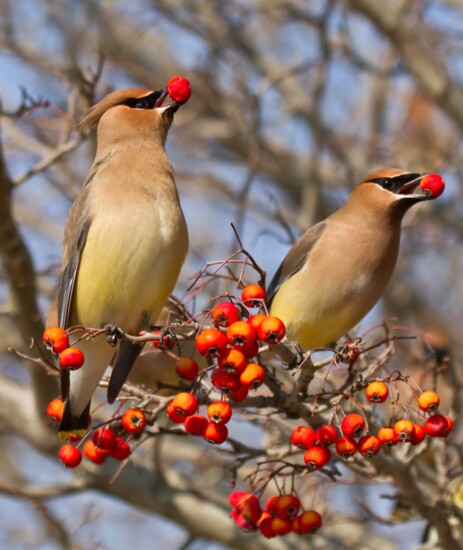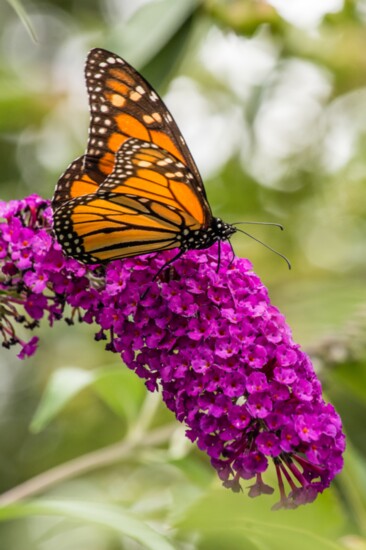Michael Spence’s favorite yards are biodiverse.
“You can look at a typical residential property, and it may look beautiful, but there’s no activity,” said Spence, owner of Trillium Gardens, a landscape design and maintenance company in Midlothian.
A biodiverse yard, on the other hand, attracts birds, butterflies, bees, and other wildlife. “It’s interesting for people to watch – but it’s also more rewarding,” Spence said.
Not to mention, it’s better for the environment overall.
But how to make your yard more than an unbroken expanse of grass and a few foundation shrubs? Michael has suggestions for plant varieties – many native to Virginia – to help make your yard - and Midlothian - more biodiverse.
Major Wheeler Honeysuckle. “This is a great native vine with red-orange flowers, specifically for hummingbirds. One client has one vine on a fence and she has hummingbirds all summer long – they actually nested nearby.”
Jacob Kline Bee Balm. This perennial with red flowers grows 3-4 feet tall and attracts all sorts of pollinators, including hummingbirds and, of course, bees. “This is my favorite variety of bee balm, but there are lots of varieties - some that clump, some that run and spread, some in different colors. This is the variety I’ve noticed gets the most attention from wildlife.”
Butterfly Weed. “It’s a very desirable perennial plant despite the name. Humans can eat pretty much anything, but some wildlife species are specialists – they can only eat certain things. The monarch butterfly is an example; its caterpillars have to eat milkweed.” He explained further that the monarch has been in decline since around the 1980s. “If people plant a few of these, they can help turn around the monarch’s decline.” Butterfly Weed and milkweed are used interchangeably and come in different colors, but the orange-red blossoms are most attractive to pollinators.
Spice Bush. This native shrub attracts all kinds of butterflies, but it’s a “required” habitat for the Spice Bush Swallowtail. “I compare it to Forsythia; it has yellow flowers and blooms at the same time in early spring, but unlike Forsythia it’s good for this particular butterfly. The Spice Bush Swallowtail must have this shrub to eat.” (The Spice Bush and Swallowtail are not pictured.)
Butterfly Bush. This non-native shrub is an excellent source of nectar for an array of hummingbirds and pollinators. It comes in a range of sizes, dwarf to midsize to large, with a flower color spanning the spectrum from white to pink and magenta to various purples.
Serviceberry. “This is a native tree, small, only about 12 feet tall, with beautiful white flowers in early spring. It produces edible red berries that people can eat, but they’re also edible to wildlife, especially the cedar waxwing, a migratory bird that travels through Virginia. They come in huge flocks; it’s amazing when you see it! They’ll eat every berry off the tree in one day. It only happens once or twice a year, and the migration changes every year.” (The cedar waxwing is pictured on our Table of Contents page.)
Dogwood. “We once did a whole back yard – it was just a big square of yard, and the clients wanted a garden of native and ornamental plants. We planted a dogwood and it had berries on it. In 10 minutes of planting that tree it was full of Eastern Bluebirds! The birds must have noticed the berries as the tree was being moved in. We saw the immediate difference in that yard, just from planting one tree. The whole crew was amazed; it was very rewarding. It’s the difference one tree can make.” In addition to Eastern Bluebirds, other birds are attracted to the berries of the dogwood, a native tree and Virginia’s official state tree. (The dogwood is pictured on our Cover.)
Red maple. “This is a great native tree. It’s not huge; it’s more size-appropriate for most residential homes. It offers brilliant fall color, but also provides habitat for birds and other wildlife. It flowers in late winter/early spring – so when bees become active as soon as winter fades and temperatures start to warm up, there’s pollen for them. Most other plants are still dormant, but the native red maple is an early food source.”
“This is what we like to do with our company,” Michael Spence said. “We like to use natives in our designs. We tell clients why these plants are important, and what they can expect in terms of activity in their gardens.”
Of course, most gardens Trillium designs and cares for contain a combination of natives and ornamentals. “It’s always a mix,” Michael said. “We have conversations with every client. They may have something in mind, like a Japanese maple, which is a gorgeous small tree. So, it’s always a mix of native and ornamental.”
Clients rave about Michael Spence and Trillium Gardens.
"We’ve been using Trillium for several years for yard maintenance and landscape design and planting," said Anne Schlegel. "Michael was able to find native plants and trees and create a design that has turned our yard into a paradise!"
"I decided I did not want a lawn," said Angie Warner. "Trillium designed a landscape that includes everything I wanted and more."
"Michael is a very knowledgeable and professional landscaper - great background with a degree in horticulture and experience managing the shrubbery/tree department at Strange’s Nursery," said Jen Lee Guthrie. "He designed a beautiful garden for my Fan home, complete with drawings and descriptions of every plant and shrub."
Kathryn East’s Fan yard was “basically all dirt and some weeds” when a nursery recommended Trillium. "I told Michael what I was looking to do, and he said he would send out a member of his team. … Not long after, Jason came out and we talked at great length as we walked around my yard and gardens. He listened and made extensive notes, taking his time to be very thorough. Two weeks later I had a cost estimate for materials and labor from Michael. All aspects of what Jason and I discussed were reflected in the estimate.” Work was completed in February and March 2019.
Kathryn added, "Michael and his team are not only professional with a strong work ethic, but they are friendly, fun, and kind! My husband is in the middle stages of dementia and he wanted to do something to help the crew, so the guys just took him under their wings and let him shovel mulch the last day they were here.
“I can't tell you how awesome these guys are,” she concluded. “Do yourself a favor and have these guys handle your plant choices and landscaping. You will never have a better experience with any other business!"
Since 2015, Trillium Gardens has offered landscape design, installation and consulting, and continuing lawn and garden maintenance. The staff includes six on the grounds crew, a full-time designer certified with the Virginia Society of Landscape Designers, and a full-time admin staffer who handles phone calls, email and scheduling but who also rotates in on the landscaping crew. Additional hiring is expected throughout the year. The company is based in Midlothian and services the entire Greater Richmond region.
https://trilliumgardensrva.com/
COVID IMPACTS
You might not expect COVID-19 to impact a landscaping company – after all, the work is done outdoors.
“COVID definitely impacted Trillium,” Michael Spence said. “We ride in trucks together; we make trips to the rock yard and mulch yard, so there are interactions with people. We offered to let people drive themselves to job sites and reimburse for mileage, but some people still didn’t come back to work. That really affected us – we still had all our contracts to maintain.”
Some positions changed to become more administrative or focus on design, so staff could work from home. “We adapted and made it work.”
Supplier relationships changed, too. “We used to just go to the nursery and pick out plants. Now we have to order in advance, and only one employee is available to help with orders."
